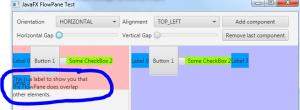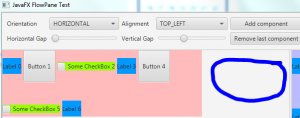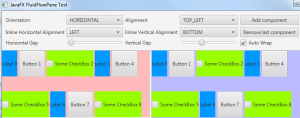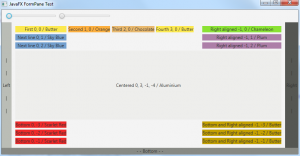JavaFX FlowPane vs. FXFluidFlowPane
We're still working on our JavaFX UI implementation for JVx. Some weeks ago, we worked with standard JavaFX layouts (layout panes) like BorderPane and FlowPane. Both layouts are useful but don't work like BorderLayout or FlowLayout from AWT/Swing. There are small differences, e.g.
It was possible to resize a BorderLayout to any size. The BorderPane checks minimum and maximum size of its nodes and doesn't resize if bounds were reached. Sure, that's useful in theory but bad in practice because the content of a screen should always resize to the screen size (e.g internal frames).
The requirement wasn't hard to implement. We now have our own FXBorderPane which has its own min. and max. calculation.
The standard BorderPane was very useful but the standard FlowPane wasn't, because it has bigger problems/limitations:
- Overlapping of Wrapped FlowPanes with other nodes
- Size calculation depends on prefWrapLength if not stretched to full-size (BorderPane, SplitPane, ...). This means that the pane doesn't grow automatically if the parent has enough space.
- The FlowPane doesn't support alignment of managed nodes
but should:
We solved all problems with our FXFluidFlowPane because our applications won't work with standard FlowPane.
In JVx applications, we have more than two layouts. The most common layout is our FormLayout. We already have JavaFX implementations for all JVx layouts, like FXFormPane or FXNullPane.
Here's screenshot of our FXFormPane test application:





 RSS-Feed
RSS-Feed